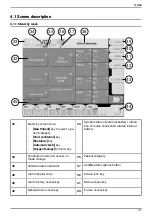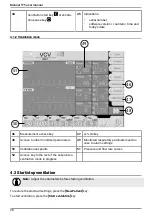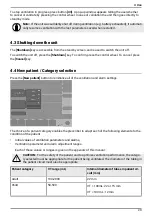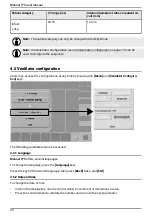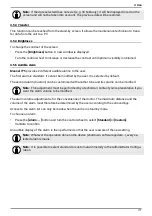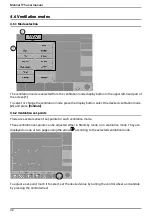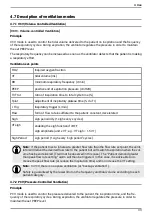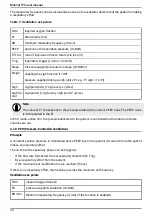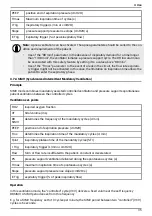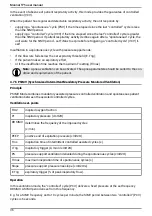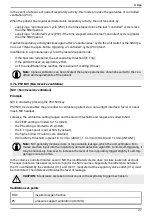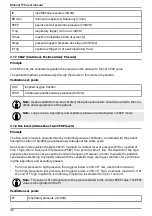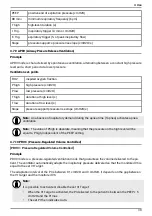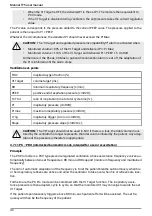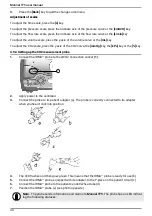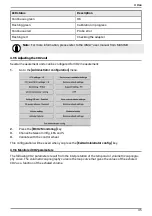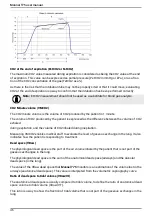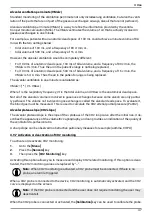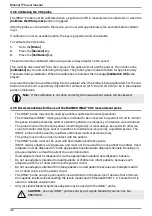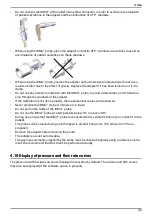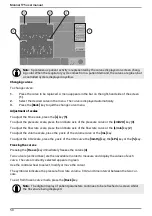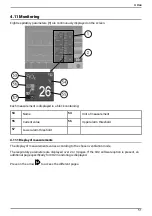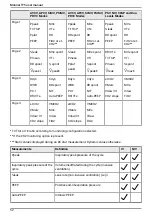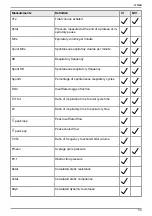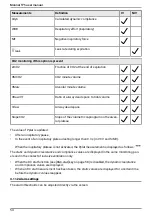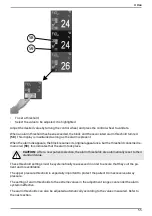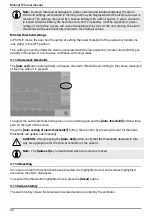
4 Use
If the patient frequency reduces to the RR mini safety threshold, the ventilator will start the fixed cycles
to gradually reach the maintenance frequency, thus leaving the patient the opportunity of triggering a
new spontaneous cycle.
In the case of insufficient or no inspiratory effort (the patient’s respiratory frequency is lower than the
set minimum frequency), the ventilator guarantees an assistance frequency equal to the set mainte-
nance frequency.
A maintenance frequency equivalent to that set in VAC or PAC mode should therefore be set.
At the start of ventilation, the assistance frequency is equal to the maintenance frequency.
The maximum insufflation time (Ti max) is automatically set at 40% of the total time of a cycle with an
assistance frequency not exceeding 3.5 seconds.
Note:
For operation of the Vt Target function, refer to PRVC mode.
CAUTION:
The set minimum frequency is a safety threshold below which the ventilator pro-
vides controlled ventilation based on the set patient frequency.
If the patient is disconnected, the frequency is no longer adapted until the patient is recon-
nected.
Safety features of the Vt target function are applied when the function is activated.
Ventilation set-points
FiO2
inspired oxygen fraction (%)
PS
inspiratory assistance (cmH2O);
RR support
maintenance frequency at which the patient is ventilated when he or she no longer
breathes spontaneously (c/min);
PEEP
positive end of expiration pressure (cmH2O);
Vt Target
target volume (mL);
I. Trig.
inspiratory trigger (L/min or cmH2O);
RR mini
minimum respiratory frequency (c/min);
PI max
maximum inspiratory pressure (cmH2O);
Slope
inspiratory pressure slope (cmH2O/s);
E. Trig.
expiratory trigger (% of inspiratory peak flow).
CAUTION:
The Vt Target function should not be used in NIV. If there is a leak, the tidal vol-
ume monitored by the ventilator no longer represents the tidal volume inhalted by the patient.
Any adaptation of the pressure is therefore inappropriate.
4.8 Oxygen therapy
The oxygen therapy function delivers a mixture of air/O2 to the patient at a given rate and FiO2. This
function is used for non-ventilation dependent patients and may be used before NIV. It has adjustable
flow rates which are able to cover the patient’s peak inspiratory flow and consequently control the
FiO2 delivered.
41
Summary of Contents for MONNAL T75
Page 2: ......

